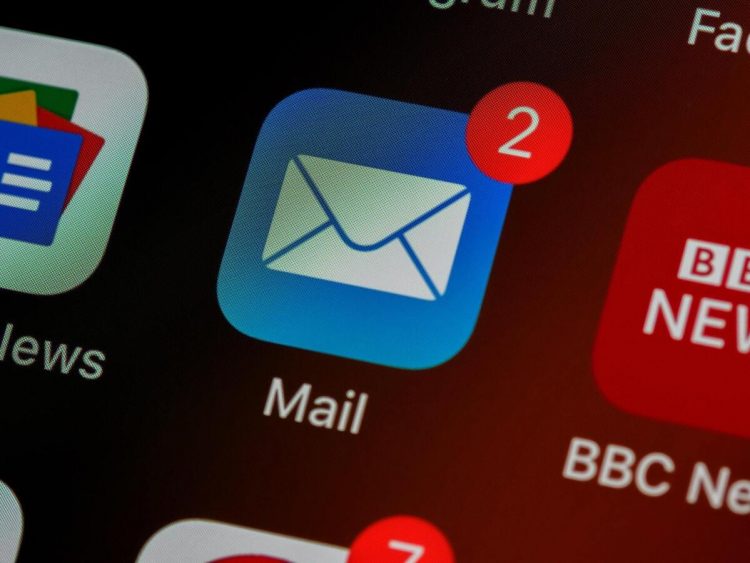Apple includes its Mail app on every iPhone. While it is a perfectly usable email client that connects to a variety of mail services including Microsoft Exchange and Microsoft 365, it isn’t as feature-rich as it could be, particularly for business and enterprise environments.
Thankfully, there’s a wide range of alternative email apps for iOS. In this article, I’ll discuss five excellent choices, each with its own unique feature set.
One note before we get started: I am only including mail apps that connect to multiple services. Services like Gmail and Yahoo Mail offer first-party apps that connect with only that service. They are generally solid options if you only need to access a single service.
Outlook
Outlook is Microsoft’s mail and calendar app for iOS. It connects natively to Exchange and Microsoft 365 and enables deep integration with Outlook for Windows or macOS, making it an excellent and obvious choice in many enterprises. But Outlook isn’t a one-trick pony. It supports other mail services as well, meaning it can be useful if you want a single mail client for work and home, or for situations where you need to access multiple work-related accounts.

Outlook’s clean interface makes the app easy to navigate.
Outlook’s iOS interface is surprisingly clean and easy to navigate — in some ways it’s better than its desktop sibling. Microsoft also offers an excellent Outlook watchOS app that continues that clean interface.
Like the Outlook desktop client, the iOS app reduces inbox clutter with an optional Focused Inbox feature, which puts messages Outlook deems more important in the inbox’s main Focused tab. Less important emails are placed out of the way in Other tab. Other useful message handling features include optional message threading and the ability to quickly flag, pin, or snooze messages via swiping or a few taps.
While the mail component of Outlook is quite good, the calendar component could be better, and you might want to rely on a dedicated calendar app like Fantastical, or Readdle’s Calendars, or Apple’s built-in Calendar.
Spark
Spark is an excellent mail app from Readdle that connects to all the major email services. It has a unique interface for helping you sort through your mail by grouping new messages into three categories: people, notifications, and newsletters. This allows you to focus on notification messages and those from individual people immediately, then look through emails sent to groups later. This sorting of messages doesn’t place them in separate folders (though Spark does support folders) — it simply separates how you view items in your inbox, and you can switch to a more standard inbox view at any time.

Spark sorts incoming messages into People, Notifications, and Newsletters sections.
Spark offers the ability to snooze messages to look at them later, and it allows most actions like delete, archive, or pin to be done with specific swipes. It also offers workflow management options, with the ability to mark emails as “done” or “set aside for later review, and its pin feature allows you to mark emails that need a response or a follow-up. You can also recall a sent email — essentially, you have a few seconds to click “undo” after clicking “send.”
Spark’s watchOS app features a very different interface from its iOS and macOS apps, but one that is much more functional for the smaller display — it still supports inbox sorting and most of the other features, and it works well with Apple Handoff.
Spark also offers a set of premium features for both individuals and organizations. For individuals, this includes options to set priorities for certain messages or senders, block and set “gatekeeper” rules, group emails by sender, and mute discussion threads that don’t require immediate attention. For organizations, there are options to share draft emails and common email templates, shared storage space, and the ability to assign messages or threads to specific team members. With an annual subscription, premium features start at $5 a month for individuals and $7 per user per month for organizations.
Edison Mail
Edison Mail supports all major email services. It offers a consumer-oriented feature set that’s also useful for business users, with the ability to manage travel plans, package tracking, bills and receipts, and refund status, and more when it detects pertinent information in your emails. It also offers the ability to view and cancel email subscriptions with a single tap.

Edison Mail’s intelligent search technology can automatically filter for emails related to travel, package, billing, and other topics.
There is an optional premium feature set called Edison Mail+ ($15 per month or $100 per year) that makes updating contact information easier, verifies email senders, blocks spam calls and texts, and displays caller ID information detected from your emails on incoming calls.
Edison Mail’s interface also supports setting swipe options for your inbox, snoozing messages, and engaging in a focus mode to avoid distractions (something a bit superseded by Apple’s Focus mode that debuted in iOS 15), and it includes a decent watchOS app.
Canary Mail
Canary Mail, designed largely around secure messaging using PGP encryption, supports most common email services. Like Spark, it organizes messages in your inbox into multiple categories including Personal, Social (emails from social media sites or notifications), Updates, Forums (forum or listserv emails), and Promotions (emails offering special deals or services). Canary also supports dark mode, custom swipe actions, and the ability to snooze messages.

Canary Mail is built around secure messaging.
Like Edison Mail, Canary Email offers a premium feature set called Canary Pro for a one-time fee of $20. The Pro version includes a vast array of features including contact profiles with additional details for the sender of any email, a built-in calendar feature, easy access to messages from favorite contacts, pinned emails, compose suggestions when creating a new message, custom email thread actions, custom notifications, an attachments browser, end-to-end encryption, push notifications, read receipts, custom email templates, and customized snooze times.
The developer is also piloting an enterprise option that includes easy encryption key management, enterprise-wide PGP management, user onboarding, support for regulatory compliance, and other enterprise features. Businesses can request to be part of the pilot by selecting an option within the app.
Spike Email
Spike is an interesting take on email. It organizes all your email threads as chat conversations, similar to the messaging features of Slack or Microsoft Teams. This makes an excellent tool for team collaboration where dedicated apps like Slack and Teams aren’t available. Email conversations can be sorted by people or by subject. The app also offers shared or group tasks and to-dos, as well as access to calendars configured on your iPhone.

With Spike you can sort email conversations by subject or people.
Spike lets you streamline your inbox by separating messages, although its sorting options are more limited than some other apps on this list, offering only Priority (people you’ve emailed previously), Other (emails from “strangers”), and Unread views.
Like other apps, Spike can snooze messages, supports swipe actions for message management (though in a more limited capacity than some other apps), offers quick message templates, and can be locked after a period of time. (Although the setting shows only Touch ID as an unlock option, activating it will activate unlock with Face ID on devices that support Face ID.)
Spike’s free plan supports just one email address and limits search results to the last 60 days. To include more addresses and get unlimited search history, you’ll need to upgrade to a paid plan. Pro and Business plans start at $5 per user per month (billed annually) and include more storage, group video calls, priority support, and other business-oriented features.
Copyright © 2022 IDG Communications, Inc.
Source by www.computerworld.com






























